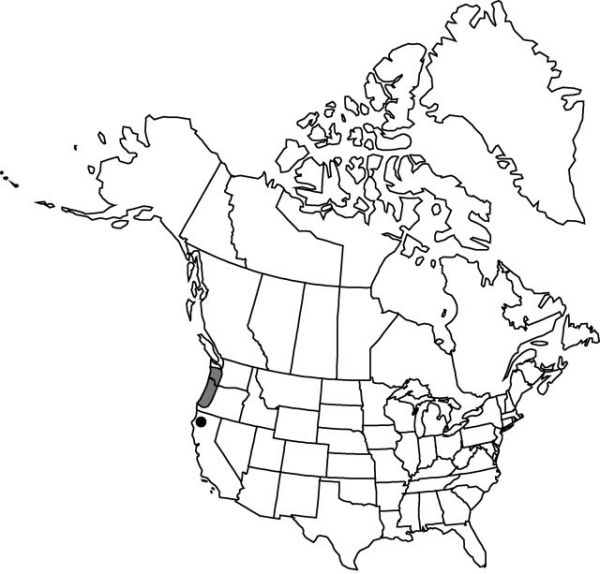Difference between revisions of "Iris tenax"
Edwards’s Bot. Reg. 15: plate 1218. 1829.
FNA>Volume Importer |
FNA>Volume Importer |
(No difference)
| |
Revision as of 19:33, 24 September 2019
Rhizomes many-branched, not creeping, forming dense clumps, slender, 0.3–0.8 cm diam.; roots fibrous. Stems simple, somewhat angular, solid, 1.5–2.7 dm. Leaves: basal somewhat lax, overtopping stem, blade light green, paling to pink or straw color basally, finely ribbed, linear-acute to linear, ensiform, 4.5 dm × 0.5 cm, margins not thickened; cauline 1–3, sheathing for 1/2 length then spreading, foliaceous, blade linear-lanceolate, not inflated, narrow, reduced, to 15 cm. Inflorescence units 1–2-flowered; spathes distant basally by 3 cm in some cases, keeled, linear-lanceolate to lanceolate-acuminate, 5–7 cm × 2–4 mm, unequal, outer longer than inner, herbaceous, margins scarious. Flowers: perianth color variable, purple, pink, lavender, cream, yellow, or rarely white; floral tube funnelform, 0.6–2 cm; sepals veined with color of limb, obovate, 5.8–6 × 1.6–2 cm, base gradually attenuate into white claw with slight yellow ridge, apex emarginate to bluntly rounded; petals same color as sepals, not prominently veined, lanceolate to oblanceolate, 5 × 1 cm; ovary 1–2 cm, slightly wider distally, base very gradually attenuate; style 2.2–3.2 cm, crests subquadrate, 8–12 mm, margins crenate or incised; stigmas triangular, margins entire; pedicel 1–5 cm, longer in second flower (when present) than in first. Capsules oblong, triangular in cross section, prominently ribbed, beaked, 3–5 cm. Seeds brown, D-shaped to irregular, wrinkled.
Phenology: Flowering Jun–Aug.
Habitat: Dry soils in fields and open woods
Distribution

Calif., Oreg., Wash.
Discussion
Plants described as subsp. klamathensis differ from others of the species in having floral tubes 11–20 mm instead of 6–10 mm, style crests somewhat longer and narrower, and flower color and markings more like those of Iris bracteata or I. innominata. The latter species has an even longer floral tube, 15–30 mm, which could be evidence of introgression. Hybrids are known to occur in the area common to both species, in Douglas County, Oregon.
Iris tenax hybridizes with I. bracteata, I. chrysophylla, I. douglasiana, I. hartwegii, I. innominata, I. macrosiphon, I. purdyi, and I. tenuissima.
Selected References
None.